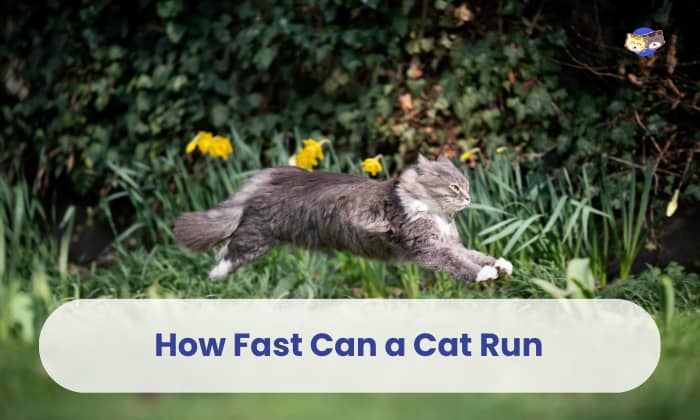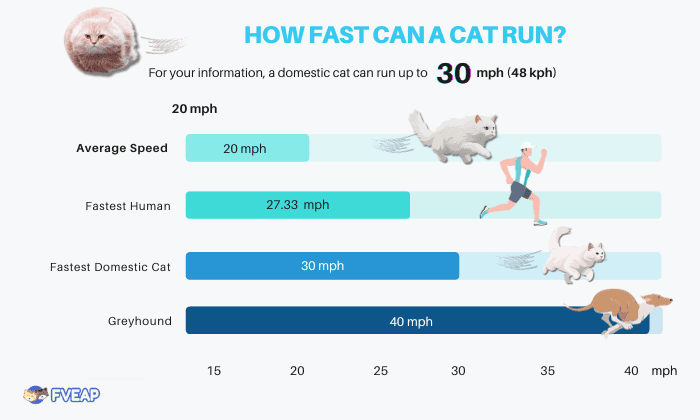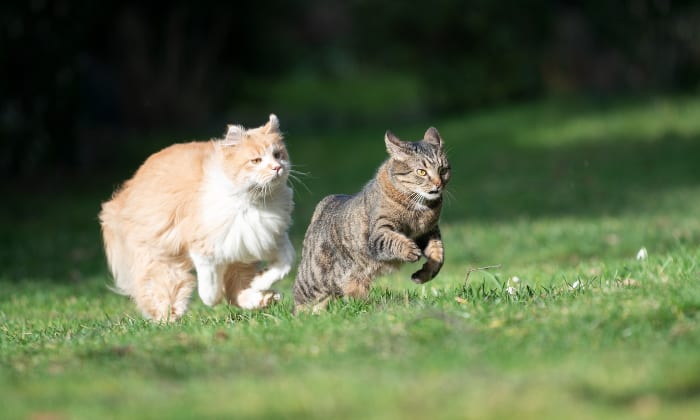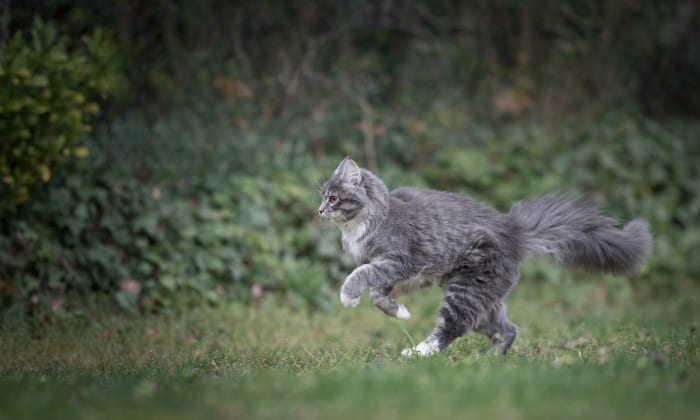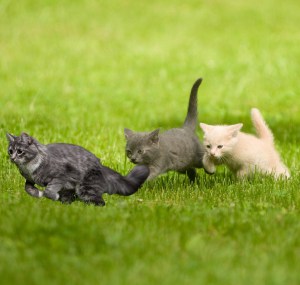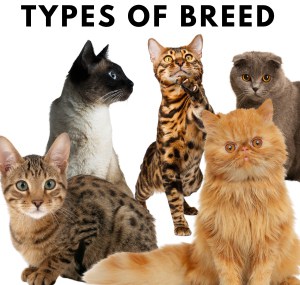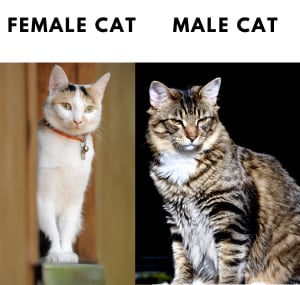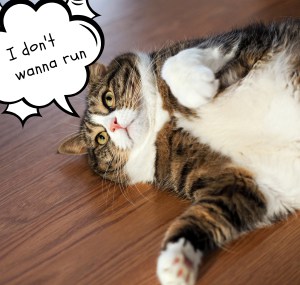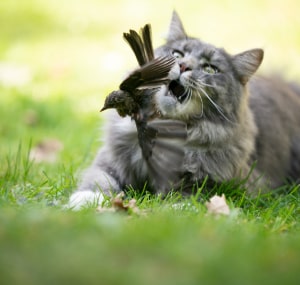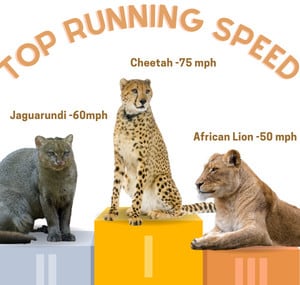Cats are known for their agility and quick reflexes, but just how fast can a cat run? These feline creatures possess remarkable physical abilities that enable them to move at lightning speed.
From their flexible spine to their powerful leg muscles, cats are built to sprint and are some of the fastest animals on the planet.
For your information, a domestic cat can run up to 30 mph (48 kph), while other cats have an average speed of 20 mph (32 kph)
In this article, we’ll take a closer look at the amazing speed of cats and explore what makes them such swift runners.
Table of Contents
How Fast Can a House Cat Run?
The average speed of a cat is around 20 mph or 32 km per hour. This house cat speed can be subject to changes depending on factors like age, breed, motivation, and health.
However, the fastest domestic cat can run up to 30 miles per hour. as their maximum speed. Although this house cat top speed is the same as the world sprinting speed, such speed can only be used by cats in short distances.
Plus, this speed is only for some cats. Some cats innately have the skill to have faster runs than other cats. With the factors I have mentioned above, this factor determines a cat running speed.
Why Are Cats Running Fast?
Have you ever noticed your cat suddenly running around the house at full speed?
This is not uncommon behavior for our feline friends, and there are several reasons why they may be doing so.
- Cats’ bodies are aerodynamic, and their digitigrade feet and muscular back legs give them the power to run at incredible speeds.
- They may experience sudden bursts of energy and run around the house, which are often called “zoomies” by pet professionals. This behavior helps them burn off energy and engage in the natural instincts that their wild ancestors have honed.
Reasons for Zoomies
Here are some reasons for zoomies in cats:
- Lack of opportunities for hunting and playing
- Excitement
- Health issues include fleas, allergies, hyperthyroidism, or feline hyperesthesia syndrome.
- After using the litter box
- Presence of other animals such as mice or other cats.
Factors Affecting a Cat’s Running Speed
1. Age
Domestic cats run at different speeds – and one of the reasons for this is their age.
Like in humans and other mammals, age plays a significant role in the running ability of cats. Younger and older cats may not be able to match the top speed of an adult cat in their prime.
Kittens are still developing their brains and bodies, so a kitten run would not be as fast as an adult cat. On the other hand, older cats may decline in physical ability and struggle to reach their top speed.
Cats typically reach full physical and mental development at around 1 to 2 years of age.
This is the time when they can achieve their maximum running speed. However, as they approach 4 years of age, their running performance may start to decline.
2. Breed
A domestic cat speed varies due to its breed.
Although cats are known for their agility and swiftness, not all breeds are created equal regarding running speed. Various factors, such as physical characteristics and genetics, can affect a cat’s speed.
- Fast cat breeds
For instance, the Egyptian Mau is considered one of the fastest cat breeds, with the ability to run up to 30 miles per hour. Egyptian Mau has been recorded as the fastest house cat in Guinness World Records.
Other breeds known for running speed include the Siamese, Abyssinian, Bengal, and Savannah cats. These breeds possess a combination of long, lean bodies, powerful legs, and natural athleticism that contribute to their ability to run at impressive speeds.
- Slow cat breeds
However, some cat breeds are not built for speed and prefer to spend their days lounging around. These slower breeds may have flat faces, which can make it difficult for them to breathe, and as a result, they may not have the same level of athleticism as other breeds.
Among the slower cat breeds are the Ragdoll, Persian, Exotic, Selkirk Rex, Tonkinese, Russian Blue, British Shorthair, American Shorthair, Ragamuffin, and Scottish Fold.
Many of these are larger and heavier cats or have flatter faces that can cause brachycephalic issues.
3. Gender
When it comes to running speed, there is evidence to suggest that male cats are generally faster than female cats.
Studies on running speeds in humans and mice have shown that males tend to be faster due to their greater aerobic capacity and muscular strength. It’s reasonable to assume that these factors play a role in the running ability of cats as well.
4. Health
A cat’s health is a significant factor that affects its ability to run at top speed. A healthy cat has a higher chance of running faster than one sick or injured. Illness or injuries can affect a cat’s physical capabilities and limit its ability to run at peak speed.
Similarly, a cat’s weight can also affect its running speed. A chunky cat may be slower than a slimmer one.
Being overweight can make it harder for a cat to move around and put extra strain on their joints, making it challenging to run fast.
5. Motivation
Motivation is a significant factor in determining how fast a cat can run, particularly for stray and feral cats. For these cats, running away from danger and hunting prey is essential for their survival. As a result, a motivated cat can be quite fast under the right circumstances.
In the wild, cats rely on their athletic abilities to survive, whether for hunting prey to eat or escaping predators. When a cat is in a life-or-death situation, it will be much more motivated to reach its top speed than house cats that are merely playing with toys.
6. Types of Cats
| Cat Species | Top Running Speed (mph) |
| Cheetah | 75 |
| Jaguarundi | 60 |
| African Lion | 50 |
| Caracal | 50 |
| Lynx | 50 |
| Mountain Lion | 50 |
| Serval | 50 |
| Clouded & Snow Leopard | 40 |
| Ocelot | 38 |
| Jaguar | 37 |
| Leopard | 37 |
| Fishing Cat | 34 |
| Bobcat | 30 |
| House Cat | 30 |
| Sand Cat | 25 |
| Tiger | 24 |
Frequently Asked Questions
Can a cat outrun a dog?
Yes, a cat can outrun a dog. While dogs are built for endurance running, cats are sprinters. But cats can only maintain their speed in short distances, so there is a possibility that dogs can outrun the cats in the long run.
Can a cat outrun a human?
Cats are faster than humans, thanks to their digitigrade feet, balance, flexibility, and use of claws for traction. While humans can walk upright for longer distances, cats’ ability to sprint and maintain speed over shorter distances makes them faster.
How fast can a cat run 100 meters?
A cat can run 100 m in about 8 – 10 seconds if it is really fast. On average, it takes them 12 seconds to run 100 meters. However, in terms of agility, they might not be the best.
Conclusion
How fast can a cat run? Well, cats are fast runners and can reach impressive speeds when needed. Their anatomies, such as their digitigrade feet and flexible spine, allow them to move quickly and efficiently.
But their speed is not limitless and is affected by the factors mentioned above.
Cat owners need to understand their pet’s behavior and energy levels and provide them with proper exercise and care to maintain their health and happiness.
Read more: How high can a cat jump?

I am Amy Sawy, a Doctor of Veterinary Medicine (DVM) graduate from the University of Kansas. y husband, Dr. Plummer, and I own a veterinary clinic in Phillipsburg, Kansas. In addition to my professional background, I am a devoted pet owner myself, with a household that includes dogs, rodents, and most notably, cats – a total of five felines in my home.
In 2020, I joined an organization as a professional writer, leveraging my experience and collaborating with my team to deliver the most valuable information for your cat’s care.


